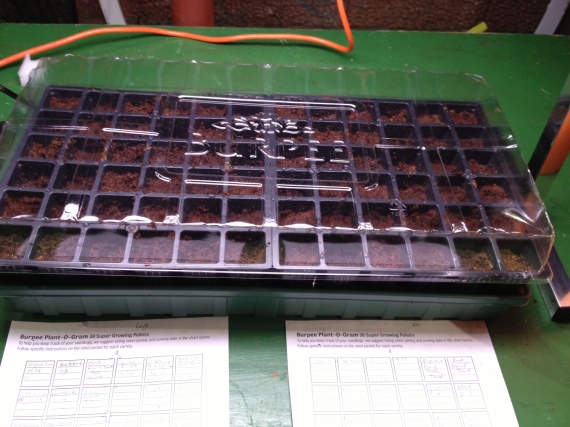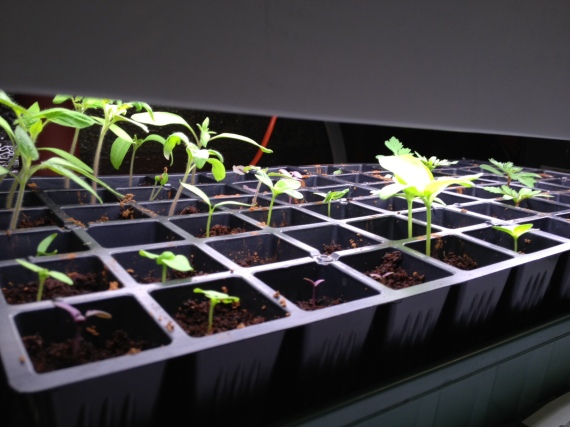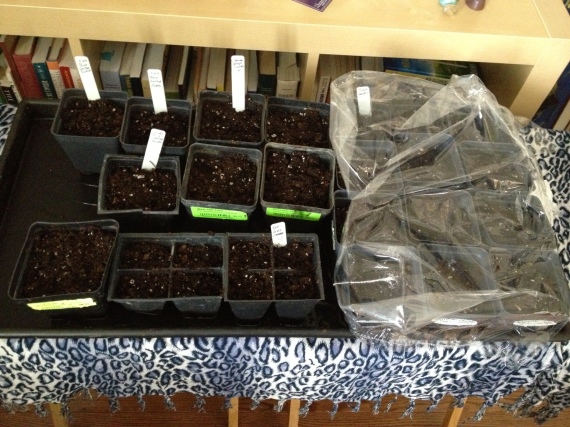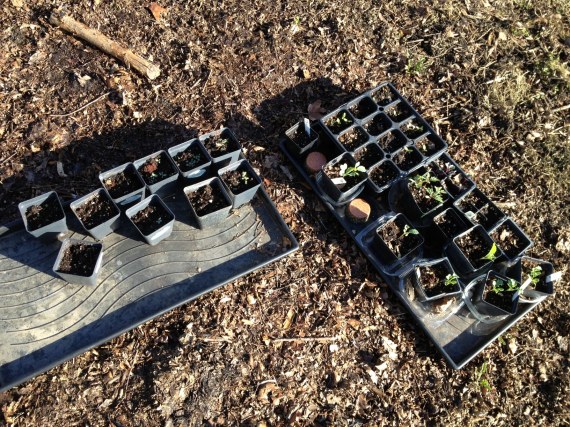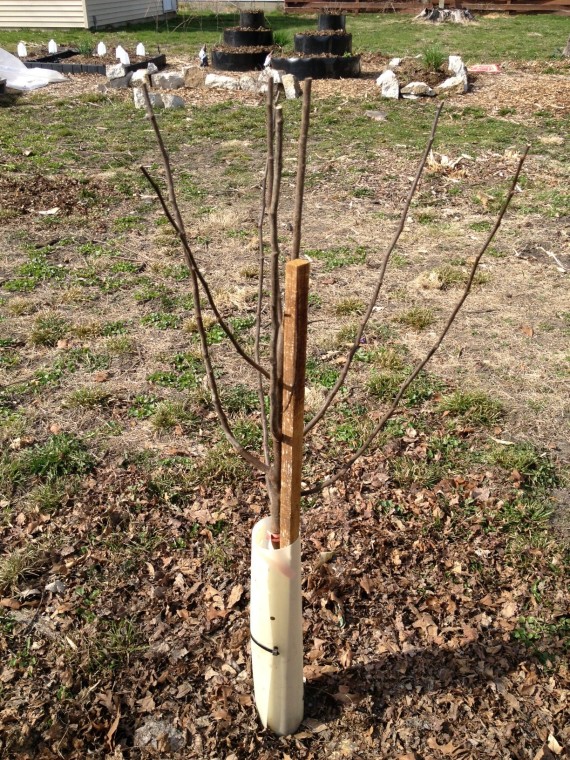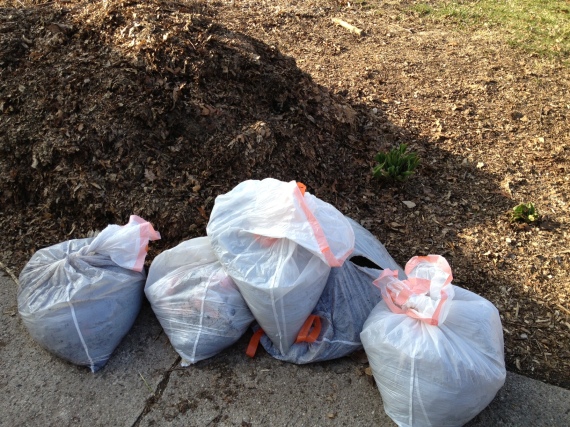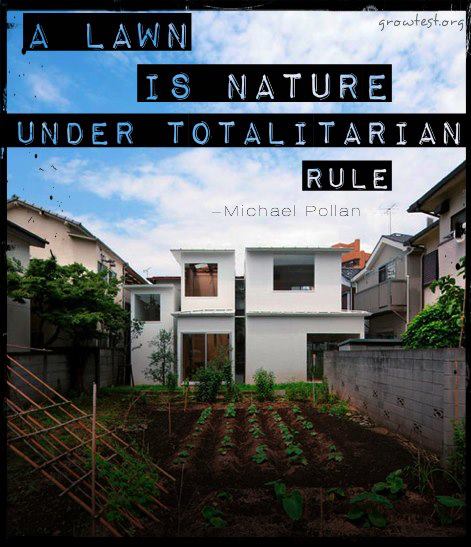Happy Earth Day! In honor of our mutual Mama, I thought I’d share some recent photos from the next season of Mad Scientist Gardening. Actually, I just clicked that link to May 26, 2013, and I’m feeling a whole lot better about my progress! We’ve come a long way, baby … but still have miles before we sleep …
On April 1, 2014, I started 72 little seed pots in a Burpee Seed Starter Kit, along with about 25 others, which I let germinate under another set of fluorescent lights in our basement, as well as upstairs in the office. It has been seed central here for all of April.
Yesterday, I began another round of seeds:
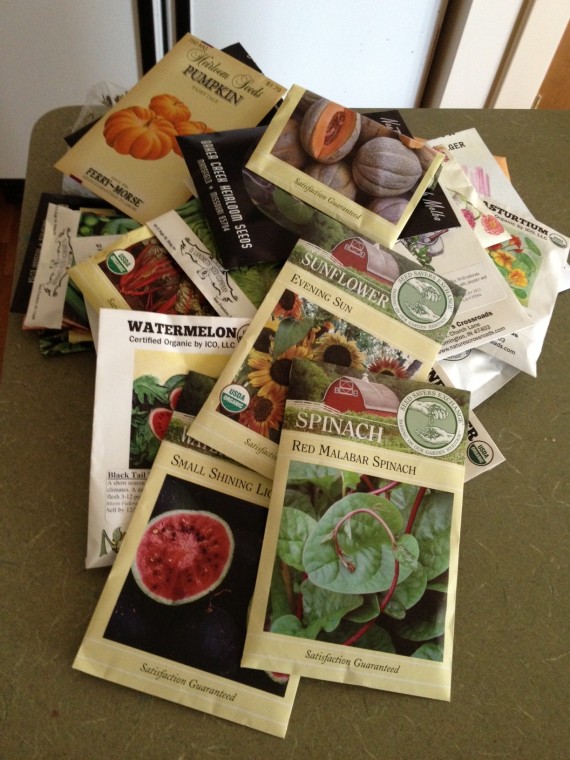
I decided to plant the warmer crops in at least two rounds, in case I get hit with leafhoppers and squash vine beetles again this year. This is round one of the squash family, and I’ll be scattering some sunflower seeds soon. We already have some sprouting from last year, which I’ll need to cover from tonight’s frost.
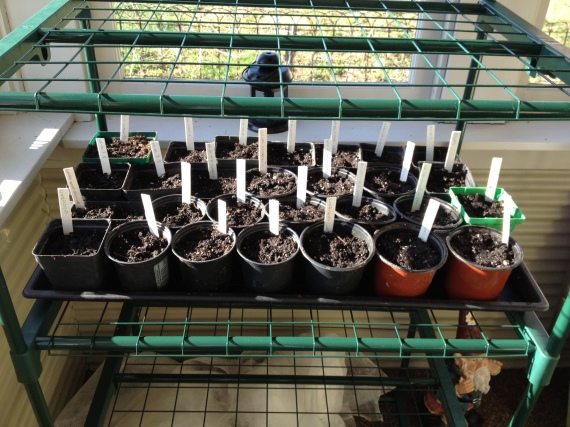
Newly planted seeds warming on our sunny porch and mini-greenhouse, which just gets used as a rack. Holy off-gas of the plastic! Maybe next year…
Last week marked the arrival of some long-anticipated fruit trees, a dwarf lilac, Alpine strawberries, lingonberry bushes, other fruit bushes and a scabrosa rose, which supposedly makes 5 inch flowers and huge hips. I had offered a Reiki class in Goshen back in February and wisely allowed some people to trade yard work hour for hour. It was so wonderful having knowledgeable help and extra hands planting all the trees and other plants:
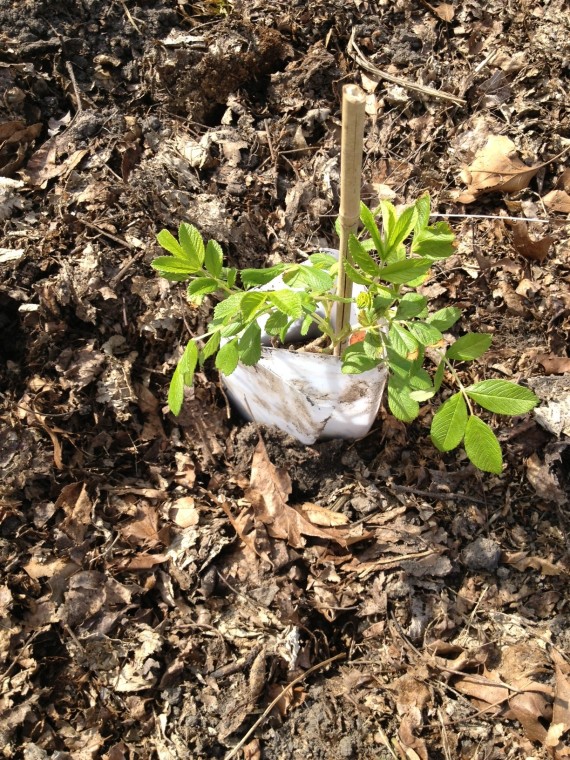
Our rose is the happiest so far, because, why, yes! We do have extremely acidic soil, which roses love. Fruit trees, not so much. I’ve started foliar sprays of Sea Magic, and they seem to be recovering from their shock. This rose has been happy from the start.
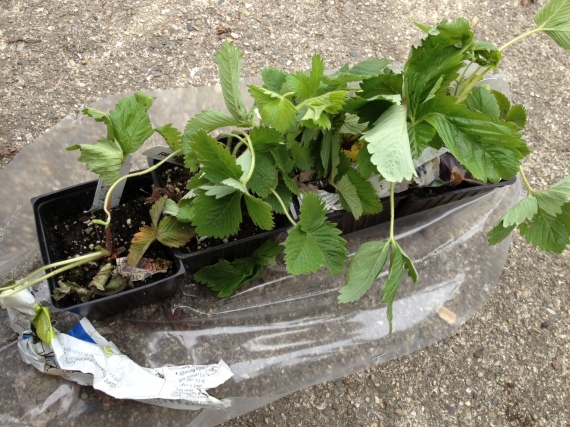
Looking at this original photo makes me feel better about the one Alpine strawberry plant that I may have killed by accidentally saturating its leaves with the essential oil based Squirrel Stopper. Oops! “Do not spray on plants.” That one guy didn’t look to happy to begin with, though. Maybe Sea Magic will work its magic.
The structure of the yard continues to change, as well. Some day when I feel the yard has really begun to reflect my full vision for it, I will post a true before and after photo. The before photo is so desolate, weedy and embarrassing, but I’ve saved it for when the front yard has started blooming into what I see in my head. Until then, last year’s massive wood mulching project has transformed into this year’s coffee and leaf mulching project to build new raised beds for beneficial bug-friendly flower mixes.
A couple weeks ago, I received an email from a neighbor asking if anyone had need of coffee grounds for compost. I jumped at the chance, forgetting that this neighbor happens to own the local coffee shop. Imagine my surprise when he dropped off 5 huge kitchen bags full of grounds! Worms love coffee grounds, and brewing coffee takes out most of the acidity. I added a bunch of the nitrogen rich grounds to our compost pile, but also mixed some in with the leaf mulch that’s rotting down and killing grass before I plant.
That same neighborly email thread allowed me to get rid of share six huge garbage bags of leaf mulch with another neighbor, which means Mount Mulchmore is more of an East Coast than a West Coast sized mountain.
The concrete hauling project remains my one-woman clean up the neighborhood attempt. I’ve gradually hauled over about half the smashed up concrete that had been looking ugly in front of the apartments next door. Fortunately, the buildings are on a corner and the ugly piles face away from our house, so it’s not completely obvious where their ugliness ends and my intended beauty begins. Of course, that means I’ve got much longer walks with the wheelbarrow, so this project has stretched over at least a month, probably more, and it’s not done yet.
I wasn’t sure about the concrete slabs, but I think my garden faery landscaper must have cast a Glamour on that concrete. We’ve now had many, many guests and yard workers over in the past couple weeks and people keep asking (sincerely), “Where did you get the beautiful stone?!” LOL … but, hey, enough of those comments inspired me to haul more slabs and build more beds. The “stones” have now begun to unify the front and back yard, and they’ll allow me to make raised beds in an otherwise dead zone of a foot of wood mulch over landscape cloth — my desperate attempt to make a dent in the thousands of dandelions going to seed each hour last year. No, I do not exaggerate!

The bed on the left already holds chocolate mint that had taken over a different raised bed. The one on the right will house marigolds and other beneficial flowers, and the one directly behind it already has yarrow and wild violets. I will plant more in there as I have time and weather permits.
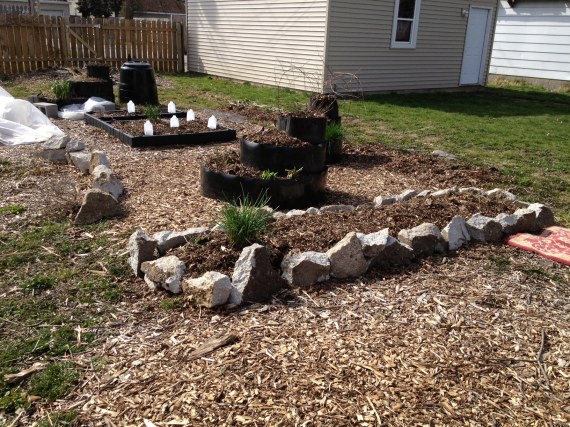
This long bed will hold the beneficial bugs mix of various clovers, dill, carrots and other pretty, nectar-y things.
The above photo also shows the beginnings of another concrete raised bed to the left, which already holds a poorly selected site for asparagus and (hopefully) cardoon, if the seeds sprout. Everyone steps on my asparagus, so I realized I needed to create some visual deterrent. Perhaps a bunny deterrent, as well. It will also let me add a lot more compost and some marigolds. Unfortunately, completing that bed involves uprooting about 50 more dandelions. Note: I already have nearly a five gallon bucket full just from this weekend:
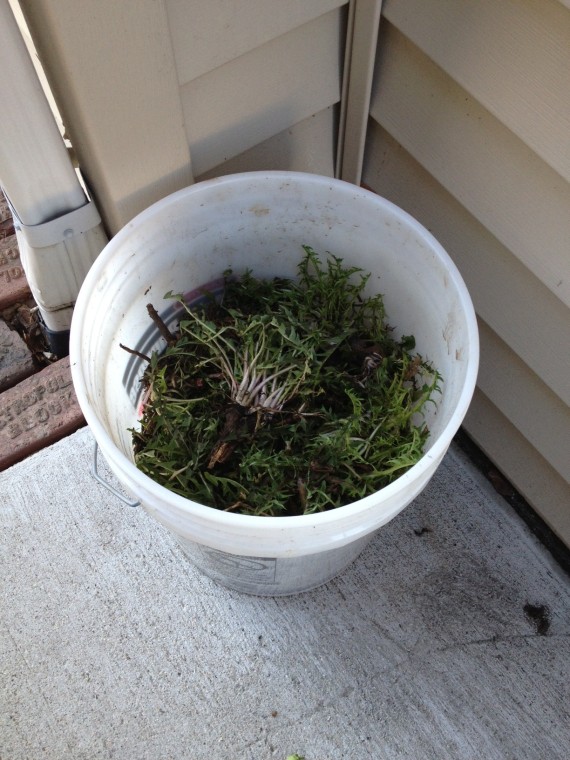
These will be cleaned and separated — roots from shoots, with the shoots put in smoothies and the roots roasted for dandelion tea/”coffee”. Uprooting dandelions is vigorous work! I’ve earned that tea, LOL, and really … it has hardly made a dent in our volunteer cash crop.
Back to the previous photo, though, I am so thrilled with how great the triple-tiered raised beds filled up! A four-person family helped me on Saturday afternoon, and I see from last year’s post that those raised beds never looked so good. I thought they had flopped after a season of growth, but it turns out that two people really weren’t adequate to fill them the right way. They stand much higher and firmer now, awaiting bush beans, calendula, borage and cantaloupe later this year. The half gallon milk jugs in that same photo are protecting fava bean sprouts from the squirrels and bunnies, who devoured my first planting of fava’s. Ohhh, they want those sprouts! Every day, I find evidence of them attempting to burrow under the milk jugs. Thank you, hidden gopher wire! Nobody’s climbing up from underneath my garden!
Sooo, that’s the update. Today, my friend Suzanna’s taking me to pick up a rose bush root ball that someone on Freecycle dug out in order to put in a new driveway. I have no idea where it will go, but it supposedly looks and smells wonderful in bloom. Plus, it’s free. Also free and coming soon: two serviceberry trees from the City of Goshen, which will go on our front easement on the side of the house with the herb garden.
I love how these plants will please my grandmothers, who both passed last year. I have Grandma Van’s little houses on our front porch, and these will look out on the serviceberry trees that birds love. Grandma Van had such a magical relationship with birds! Gramma Irene loved roses and tended so many rose bushes in her lifetime. I’ll now have two, and a friend/student and I planted dozens and dozens of white lilies to edge the back of the concrete lined front bed. Irene Lilly will be pleased. 🙂
